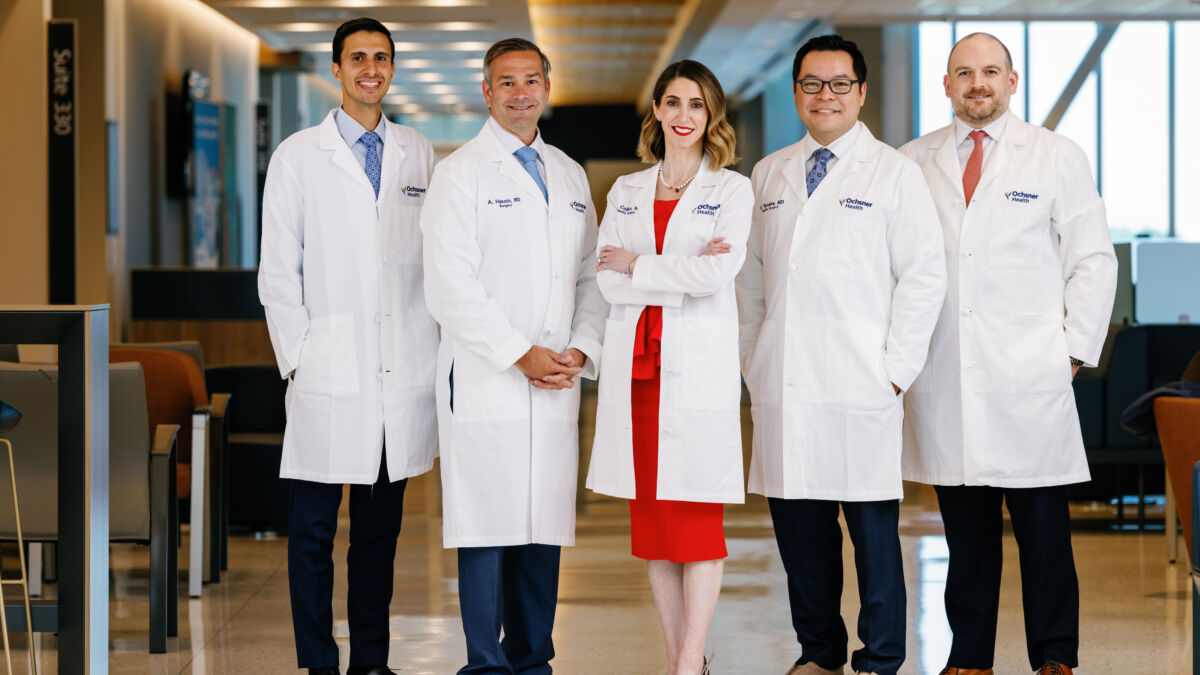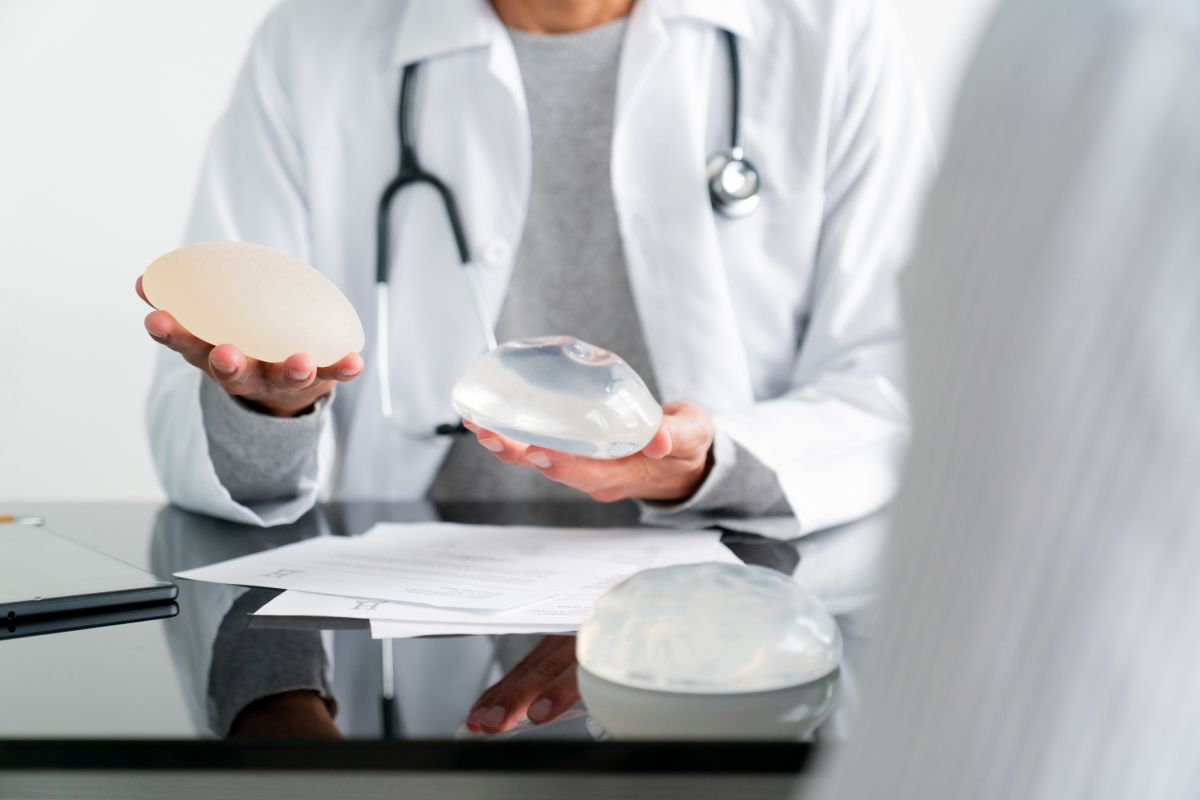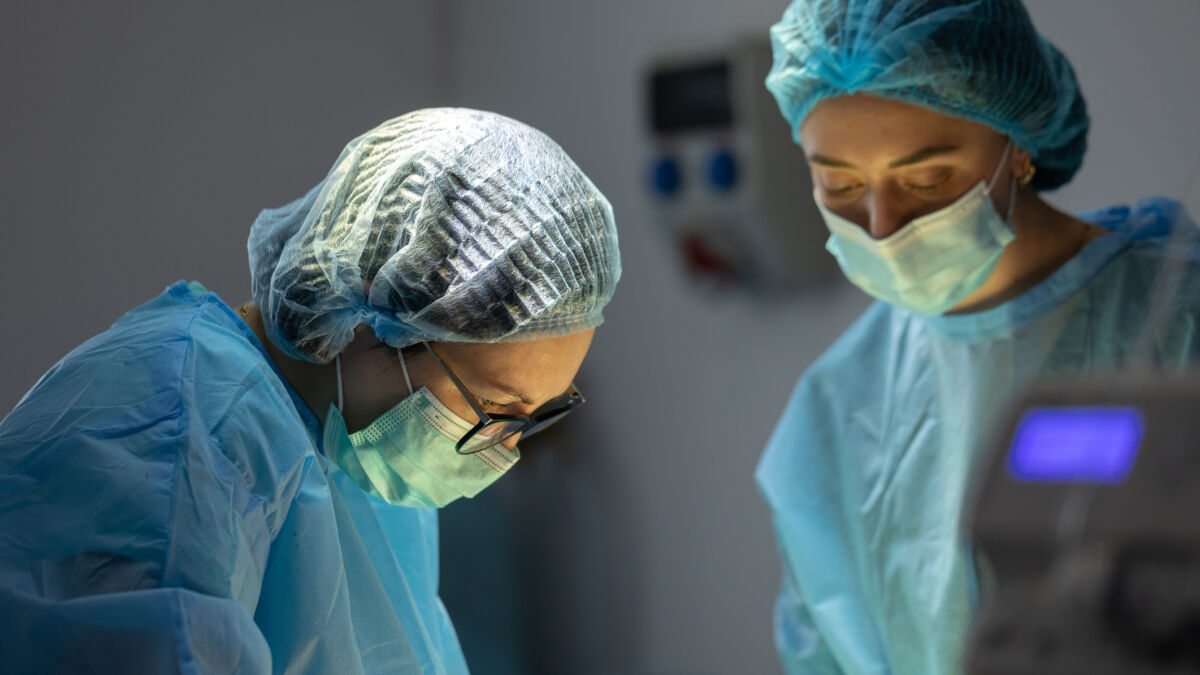Ochsner Health is the leading nonprofit healthcare provider in the Gulf South. Ochsner inspires healthier lives and stronger communities through our mission to serve, heal, lead, educate and innovate.

Why choose Ochsner for Breast Reconstruction Surgery?
Breast reconstruction surgery restores the shape and appearance of the breast after a mastectomy or loss of tissue. At Ochsner MD Anderson Cancer Center, our plastic and reconstructive surgeons use state-of-the-art techniques to provide advanced care. Choosing reconstruction is a personal decision that considers factors like procedure options, benefits and recovery time.
At Ochsner Health, our plastic surgeons work closely with breast surgeons, medical oncologists and radiation oncologists to create a care plan tailored to your needs. This team-based approach ensures expert support and coordination with any additional breast cancer treatments. Together, we’ll help you choose the best reconstruction option, guiding you with confidence and care.
Find a Doctor
Autologous Breast Reconstruction

The Ochsner Plastic Surgery team includes skilled microsurgeons who provide advanced reconstructive techniques after mastectomy. Autologous reconstruction, or flap surgery, uses skin and fat from areas like the belly, buttocks, or thighs to rebuild the breast. This involves transplanting tissue and connecting tiny blood vessels under a microscope. Using a patient’s own tissue offers long-lasting results and eliminates the need for implant maintenance.
Microsurgical options include:
- Deep inferior epigastric perforator (DIEP) flap (abdomen)
- Profunda artery perforator (PAP) flap (thigh)
- Superior gluteal artery perforator (SGAP) flap (upper buttocks)
- Lateral thigh perforator (LTP) flap (thigh or buttocks)
- Superficial inferior epigastric artery (SIEA) flap (lower abdomen)
- Multiple or stacked flaps
Implant-Based Breast Reconstruction

Implant-based breast reconstruction uses an implant or a temporary tissue expander, which is an adjustable saline device, placed during a mastectomy. The expander is gradually filled in outpatient visits, followed by a second surgery to replace it with a long-lasting, softer breast implant. Additional procedures, like fat grafting, are often done to improve results. This type of reconstruction offers shorter surgery times and quicker recovery.

Oncoplastic Breast Reconstruction

Oncoplastic breast reconstruction combines breast cancer surgery with plastic surgery techniques to reshape or rebuild the breast after a lumpectomy.
This approach fills the space left by the removed cancer, using methods similar to breast reduction or lift procedures to move remaining tissue into the lumpectomy area. Along with removing cancer, this technique helps reduce scarring from surgery and radiation, providing effective treatment with improved cosmetic results.
Additional Procedures
Fat grafting removes fat from areas like the thighs, belly or buttocks using liposuction. The fat is processed into a liquid and injected around the reconstructed breast to add volume, improve shape or smooth the transition to the chest wall.
Nipple reconstruction is an outpatient procedure done after the breast has healed. Tissue from the reconstructed breast is used to create a nipple, and a few months later, tattooing can add color to the nipple and areola. Advanced techniques allow for 3D tattooing, and some women choose tattooing alone as their reconstruction option.
"From the beginning, Dr. Christopher Smith made me feel at ease with the reconstruction journey I faced after a mastectomy. He listened to my concerns, valued my input and guided me toward the best option to feel whole again. His calm nature made it easy to place my trust in him, and I am grateful for his experience and professionalism. I will always recommend Dr. Smith to women facing their own journey with breast cancer."
- MaeBelle M., Breast Reconstruction Surgery patient
FAQs
-
How long does it take to recover from breast reconstruction surgery?
Recovery time depends on the type of reconstruction. For implant-based reconstruction, recovery usually takes 4 to 6 weeks. For flap surgery, which uses your own tissue, recovery typically lasts 6 weeks to 3 months.
-
How painful is breast reconstruction surgery?
Every patient experiences surgery-related pain differently. We use a multimodal approach to pain management, including over-the-counter medications like Tylenol and ibuprofen, muscle relaxers, and prescription pain medicine. Most patients stop using prescription pain medication after one to two weeks.
-
Is breast reconstruction more than one operation?
Breast reconstruction is a journey, and most patients need several surgeries to reach their final aesthetic goal. Revision surgeries are usually spaced at least three months apart to give the body time to fully recover from the previous procedure.
-
What is flap surgery?
Flap surgery uses a patient’s own tissue for reconstruction. The transferred tissue is called a "flap." This technique is widely used in reconstructive surgery, including rebuilding a scalp, repairing an extremity, reconstructing a jaw, and recreating a breast after a mastectomy. For breast reconstruction, the most common donor sites for flaps are the abdomen (DIEP flap), thigh (PAP or DUG flap), buttocks (GAP flap), or back (latissimus flap).
-
How long is the hospital stay for breast reconstruction?
For implant-based surgery, the procedure is usually done as an outpatient surgery, so the patient can go home the same day. For flap surgery, the hospital stay typically lasts two to three days.
-
What are the two types of breast reconstruction?
Breast reconstruction after a mastectomy can be done with implant-based surgery or autologous reconstruction, which uses the patient’s own tissue.
-
What is oncoplastic breast surgery?
Oncoplastic breast surgery combines breast conservation therapy, such as a lumpectomy, with reconstruction. After the cancer is removed by a breast oncology surgeon, the remaining breast tissue is rearranged by a plastic surgeon to restore shape. This reconstruction is similar to a breast reduction or lift and helps fill the lumpectomy defect, improving appearance after radiation. Recovery typically takes two to three weeks.
-
Do you offer virtual visits?
Yes, we provide telehealth visits for residents of Louisiana, as our physicians are licensed in the state.
-
What kind of support will I have after my surgery from the Plastic Surgery team?
Our team is available 24/7 to support you. During business hours, you can reach our nursing staff by phone or through MyChart. After hours, our plastic surgery staff can be contacted by calling the main hospital number at 504-842-3000 and requesting the plastic surgeon on call.